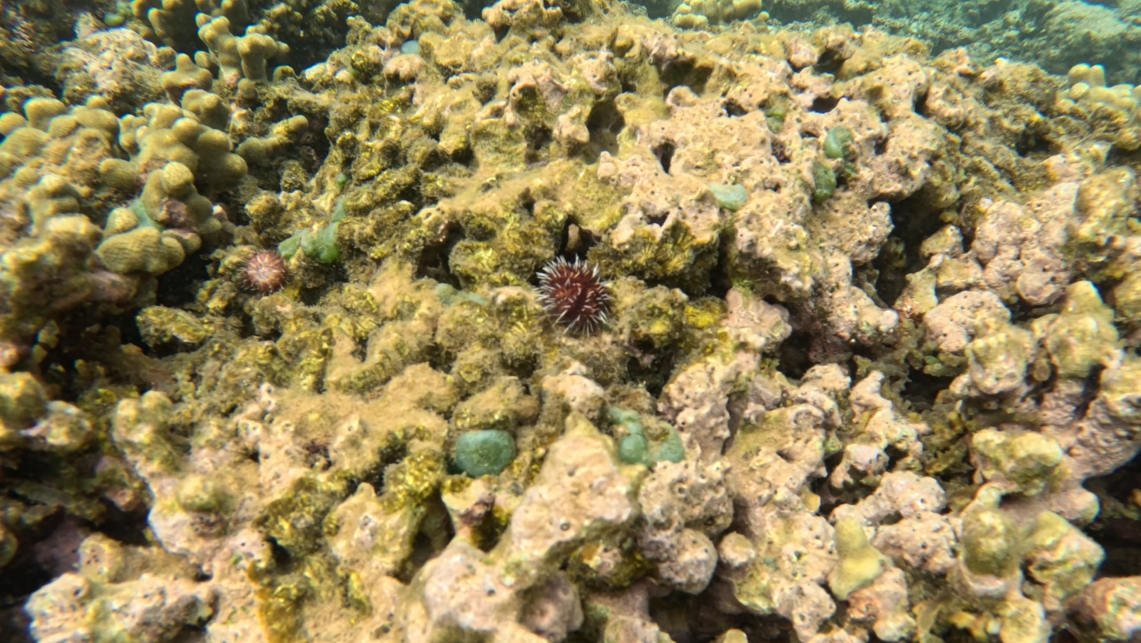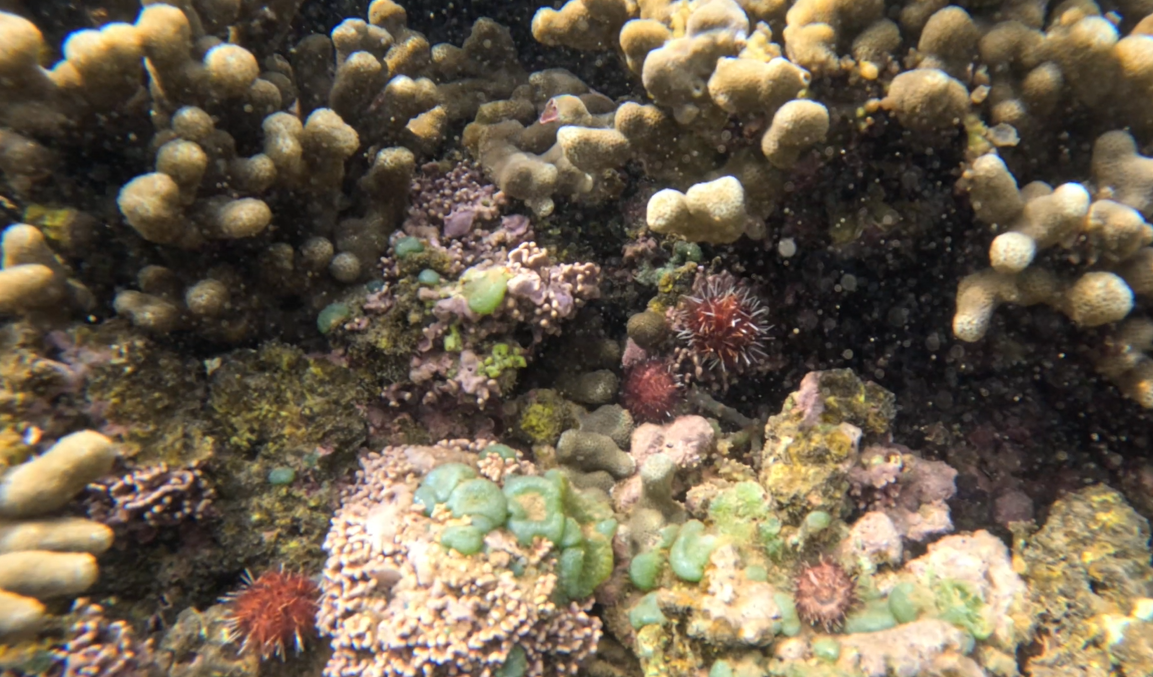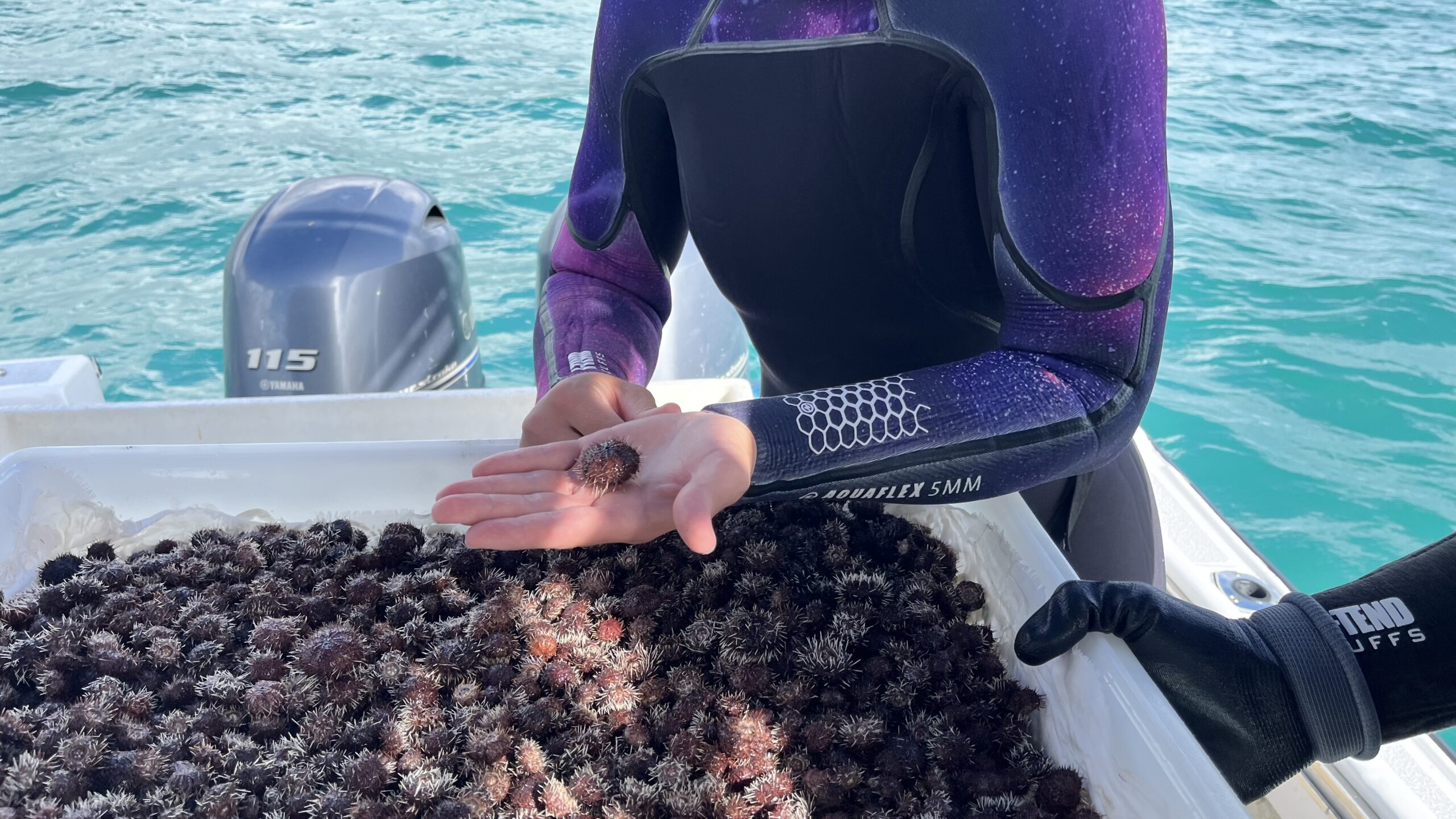Teams from the Anuenue Fisheries Research Center (AFRC) have released the one-millionth juvenile native sea urchin in Kaneohe Bay on Oahu, Hawaii. Since January 2011, the AFRC has successfully spawned and raised Collector Urchins in captivity with the purpose of releasing them in the bay as part of an ecosystem-based management plan for environmental mitigation work both in the bay and off Waikiki.
“The millionth urchin and about 13,000 others were planted on a patch reef in North Kaneohe Bay where they will go to work, grazing on invasive seaweed,” Eric Dilley, DAR Monitoring Coordinator announced in a Department of Land and Natural Resources release.

The native urchins act as underwater gardeners and help to keep invasive seaweeds under control. This allows corals to grow and provide a habitat for reef fish and other marine life.
Urchins are spawned, settled, and raised at AFRC on Sand Island as part of a multi-agency effort, involving DAR, the Pacific Cooperative Studies Unit (PCSU), NOAA, the U.S. Fish and Wildlife Service, and the Hawaii Department of Transportation (DOT). The sea urchin hatchery is a 24/7 operation that raises sea urchins until their juvenile life stage. It takes approximately four-to-six months until urchins are large enough to be transferred to Kaneohe Bay.
Before the urchin hatchery was created, invasive macroalgae grew in thick mats on top of reefs in the bay, effectively smothering them, blocking sunlight, and killing coral. Since these native collector urchins have been out-planted, invasive seaweed cover has been reduced and coral health has improved, according to the DLNR. Today, these areas are monitored for algae regrowth and urchins are placed as needed. Collector urchins, Tripneustes gratilla, are native to Hawaii, the Red Sea, the Indo-Pacific, and the Bahamas. Collector urchins graze day and night and are noted for their love of algae.

In memory of a long-time DLNR employee, staff named the millionth urchin “Vince”, in honor of Vincent Goo, a fisheries technician at AFRC who passed away in 2021.
“Vince was one of the unsung heroes of the urchin hatchery,” said hatchery manager David Cohen. “He took an interest from the very beginning and helped me and the project every step of the way.”
This month, crews will begin their intensive field season, which includes monitoring 22 patch reefs in Kaneohe Bay for coral health and the presence of invasive algae.



